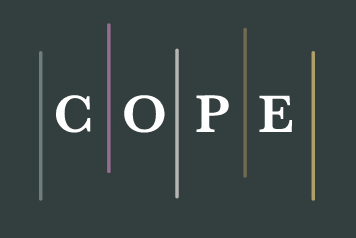The Mathematical Thinking Among Muslims and Its Impact on the Science of Inheritance
DOI:
https://doi.org/10.58355/maqolat.v2i3.76Keywords:
Mathematics among Muslims, The science of inheritance, Mathematical formulation in inheritance, The issue of Intersex in inheritance.Abstract
The challenge I faced while teaching the inheritance course to students unfamiliar with this field and its terminology was evident in their difficulty in easily understanding the scientific material, requiring considerable time for explanation. This situation prompted me to seek a way to simplify their understanding of inheritance. Given the mathematical nature of the course and the students' familiarity with this area, so I decided to utilize this aspect to achieve my teaching objectives, eventually developing mathematical rules that clarify the distribution of inheritance among heirs. This approach not only helped me achieve my goals but also led me to connect the efforts of Muslims with mathematics, highlighting their creativity in this domain, which continues to this day. Therefore, in my teaching methodology, I relied on both library research and mathematical approaches. The research highlighted the contributions of Muslims to mathematics and I introduced some of my own rules, applying them specifically to the topic of intersex cases.
Downloads
References
Al-Qalasadi, Abu al-Hasan Ali ibn Muhammad ibn Muhammad ibn Ali al-Qurashi, Kashf al-Astar ‘an ‘Ilmi Huruf al-Ghubar, manuscript at the British Library, another copy exists at King Saud University in Riyadh, number: 5951 F 1718/5.
Benis, Al-Sheikh, Kitab Bahjato al-Basar fi Sharhi Faraid al-Mukhtasar, private manuscript.
Al-Jurjani, Al-Sharif. (1938). Al-Ta'rifāt, Egypt: Matba'ah Al-Ittiḥād Al-Masrī.
Al-Jua'idi, Muhammad Abdullah. (2001). “Al-Tarjamah wasīlah binā' wa al-tajdeed fi al-thaqāfah al-'Arabiyyah al-Islāmiyyah, wa tawāsuloha ma'a al-thaqāfah al-Ispāniyyah”, Coloque: Al-Tajdīd fī al-fikr al-Islāmī.
Al-Kalwadhani, Abu al-Khattab Mahfouth ibn Ahmad. (1995). Al-Tahdhīb fī 'Ilmi al-Farā'id wal-Wasāyā, Riyadh: Maktabah al-Obikān.
al-Kashi, Ghiath al-Din Jamshid, Miftāḥ al-Ḥisāb.
https://archive.org/details/KitabMiftahAlHisab
Al-Qifti, al-Wazir Jamal al-Din. (2005). Iẖbār al-'Ulamā' bi-Akhbār al-Ḥukamā', Beirut: Dār al-Kutub al-'Ilmiyyah, ed 1.
Al-Qalasadi, Abu al-Hasan Ali ibn Muhammad ibn Muhammad ibn Ali al-Qurashi. (1999). Šarḥ Talẖīs A'māl al-Ḥisāb, Beirut: Dār Sāder.
Ibn al-'Ibri, Abu al-Faraj Gregorios ibn Aharon al-Malati. (1414 H/1997 CE). Tariẖ Muẖtasar al-Duwal, Beirut: Dār al-Kutub al-'Ilmiyyah, ed 1.
Ibn al-Nadim, Muhammad bin Ishaq. (1398 H/ 1987 CE). Fihrist Ibn al-Nadim, Beirut: Dār al-Ma'rifah.
Ibn al-Ha'im, Abu al-Abbas Shihab al-Din Ahmad ibn Mohammad al-Maqdisi. (1999). Muršidah al-Tālib ilā Asnā al-Matālib fī 'Ilmi al-Ḥisāb, Beirut: Dar al-Gharb al-Islamī.
Ibn Hajar al-Asqalani. (1994). Inbā' al-Ġumr bi-Anbā' al-Ġumr, Cairo.
Ibn Kathir, Abu al-Fida Ismail. (1992). Al-Bidāyah wa al-Nihāyah, Beirut: Maktabah al-Ma'ārif.
Ibn Makula, Abu Nasr Ali ibn Hibah Allah. (1411 H). Al-Ikmāl fi Raf' al-Irtiyāb ‘an al-Mutalif wal Mukhtalif fī al-Asmā’ wal Kunā wal Anasāb, Beirut, Dar al-Kutub al-Ilmiyyah.
Sa'idan, Ahmad Salim. (May 1963). “Tarā'īf al-Ḥisāb li-Abī Kāmil, Shujā' bin Aslam”, Egypt: Majallah Ma'had al-Makhtūtāt al-‘Arabiyyah, 9: 2, 291-320.
Abdullatif, Salah Aldin Mohammad. (2011). “Al-Battānī Contributions in Astronomy and Mathematics”, (chapter of: Contributions of Early Muslim Scientists to Engineering Studies and Related Sciences), IIUM, International Islamic University Malysia, 1 first ed.
Bellve, José. Jabir b. Aflah. (2011). “On the limits of solar and lunar eclipses”, SCIAMVS 12: 3-27.
Bisom, Thomas (2021). "The Works of Omar Khayyam in the History of Mathematics," The Mathematics, Enthusiast: 18: 1, 290-305.
DOI: https://doi.org/10.54870/1551-3440.1524
Davidian, Marie-Louise. (Oct.-Dec.1960). “AI-Birünī on the Time of Day from Shadow Lengths”, Journal of the American Oriental Society. 80, 330-335.
doi.org/10.2307/595882
Edward Van Dyck. (1896). Iktifāa' al-Qanoo' bimā huwa Matboo', Beirut: Dār Sāder,
Hormoz, Pazwash and Gus Mavrigian. (OCTOBER 1986). “The contributions of Karājī: Successor to al-khwārizmī”, The Mathematics Teacher, 79: 7, 538-541.
Lorch, Richard P. (March 1979). “The Astronomical Instruments of Jābir ibn Aflaḥ and the Torquetum”, Centaurus, 20: 11–34.
https://doi.org/10.1111/j.1600-0498.1976.tb00214.x
Kennedy, E. S. and Muruwwa, Ahmad. (Apr., 1958). “Bīrūnī on the Solar Equation”, Journal of Near Eastern Studies, 17: 2, 112-121.
Kennedy, E. S. (DECEMBER 1963). “Al-Bīrūnī on determining the meridian”, The Mathematics Teacher, National Council of Teachers of Mathematics, 56: 8, 635-637.
King, David Anthony. (1972). The Astronomical Works of ibn Yunus, Yale University PhD thesis, University Microfilms, A XEROX Company, Ann Arbor, Michigan.
Roshdi, Rashed. (1994). “The Development of Arabic Mathematics: Between Arithmetic and Algebra”, Translated by: A. F. W. Armstrong, Springer Science+Business Media Dordrecht, 22-32.
Siadat, M. Vali and Tholen, Alana. (2021). “Omar Khayyām: Geometric Algebra and Cubic Equations”, Cubic Equations, Math Horizons, 28:1, 12-15.
DOI: 10.1080/10724117.2020.1770495
Stevenson, F. R. and S. S. Said, “Precision of Medieval Islamic Eclipse Measurements.” Journal for the History of Astronomy 22, (1991): 195–207.
DOI : 10.1177/002182869102200301
Struik, D. J. (April 1958). “Omar Khayyām, mathematician”, The Mathematics Teacher, National Council of Teachers of Mathematics, 51: 4, 280-285.
Downloads
Published
How to Cite
Issue
Section
License
Copyright (c) 2024 Mekki Klaina

This work is licensed under a Creative Commons Attribution 4.0 International License.






















